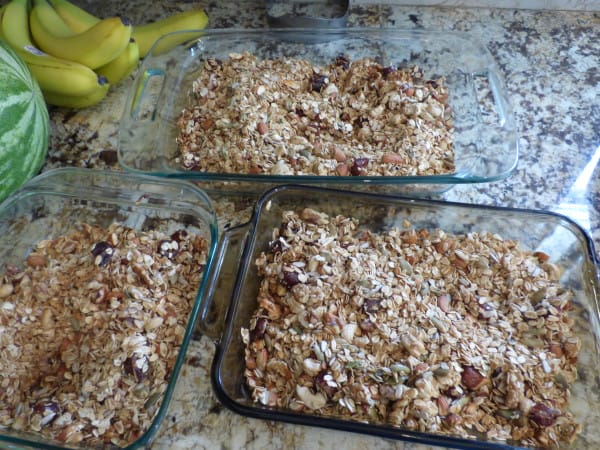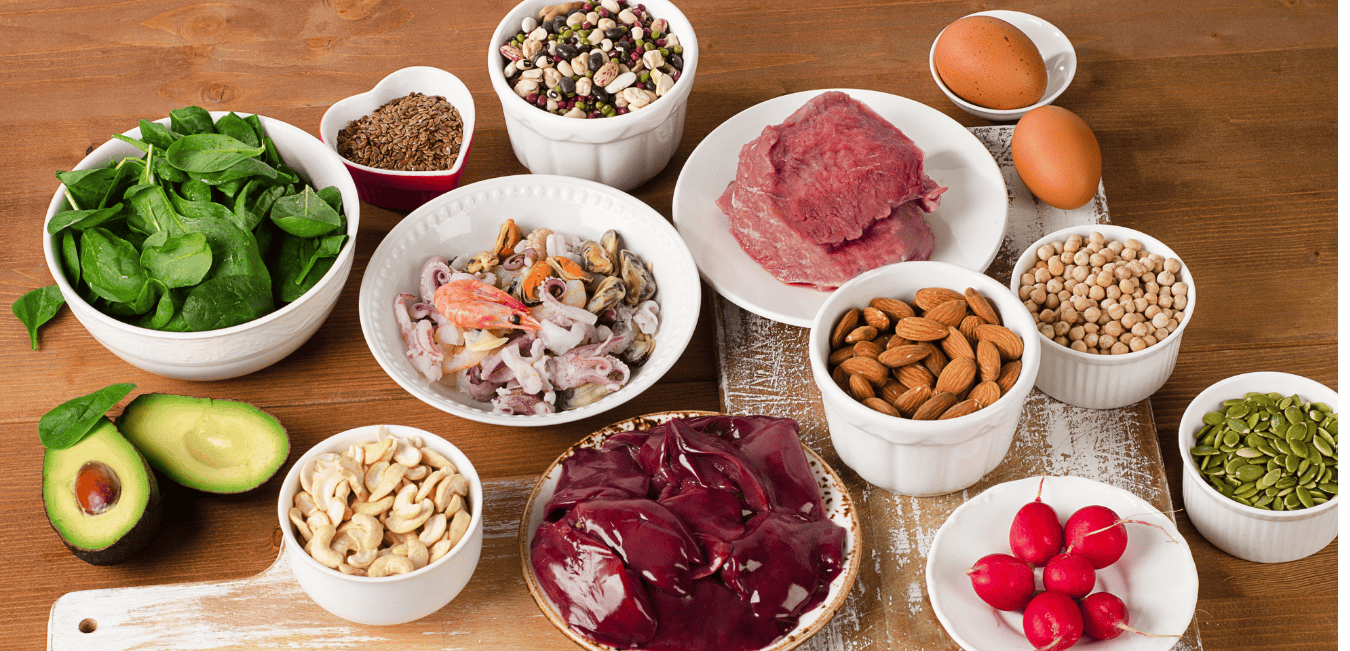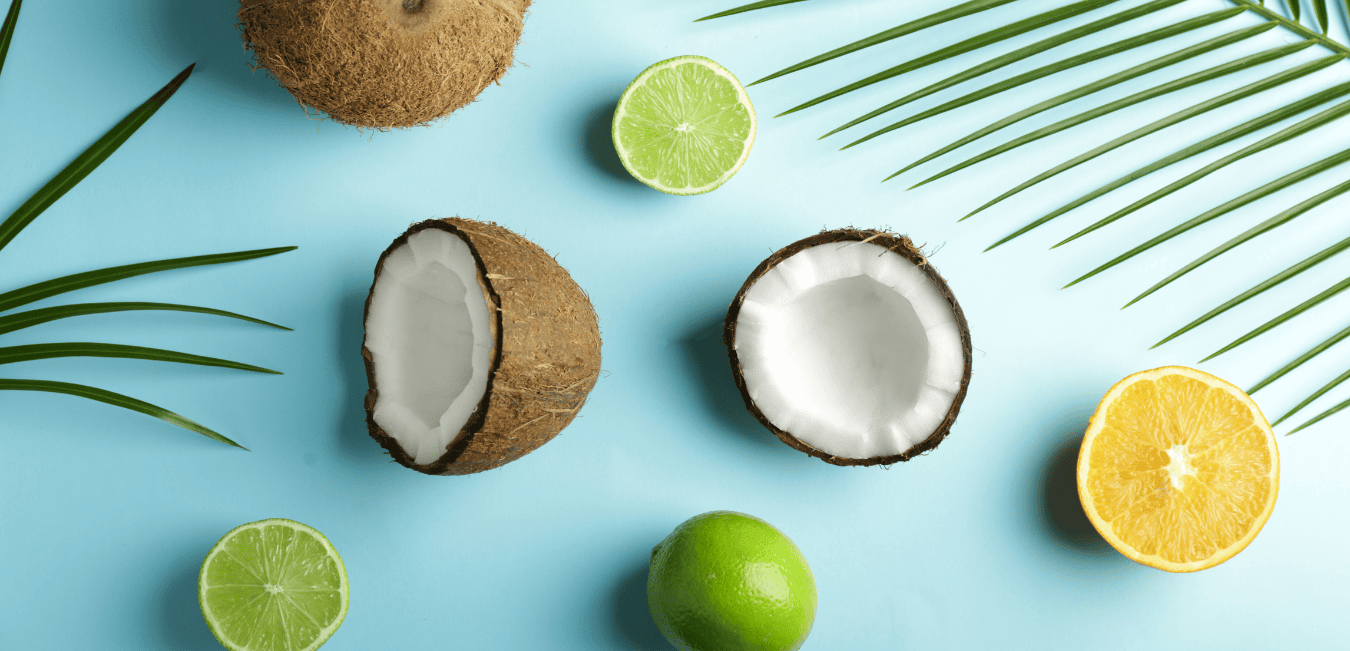Constipation is common in children, and finding a gentle, natural solution that works for your child is important. Miralax is often prescribed for constipation but its long-term use in children remains debated due to concerns about potential side effects. In this article, you’ll learn all about miralax, as well as natural alternatives like chia seeds that may help hydrate the colon and support regularity, plus more practical tips for promoting healthy digestion in children. I’ll also share my favorite popsicle recipe that includes chia seeds!
Constipation in Kids: A Common Concern
Constipation is one of the most frequent gastrointestinal issues in children, affecting up to 30% of kids (1). Constipation can cause discomfort, bloating, and pain, and it’s estimated that constipation accounts for up to 3% of primary care provider visits (1). (Although in my experience I think it’s likely more.) Beyond physical discomfort, constipation can impact a child’s mood, energy levels, and ability to detoxify effectively. Chronic constipation, if unaddressed, is associated with serious complications, including fecal impaction, anal fissures, and even urinary tract infections (2).
Factors that may contribute to constipation in kids include diets low in fiber and high in processed foods, inadequate fluid intake, and a lack of physical activity – all of which can slow digestion and lead to harder stools. Additionally, many children habitually ignore the urge to use the bathroom, either because they’re engaged in activities or feel embarrassed to go while at school, which can worsen constipation over time (2). When it comes to constipation, it’s really important to stay on top of it because the longer the child goes without passing stool, the more backed up things become.
To learn more about constipation, read these articles: Treating Constipation In Kids & Babies With Integrative Medicine and Prune & Fiber Energy Balls With PooMotion™: A Tasty Solution For Constipation
What is Miralax, and How Does It Work?
Miralax, a popular over-the-counter laxative, is commonly used to treat constipation in both adults and children. The main ingredient in Miralax is polyethylene glycol 3350 (PEG 3350), an osmotic laxative that works by drawing water into the intestines and softening stool, making it easier to pass.
Research has shown that PEG 3350 is often effective in managing constipation, with studies indicating it performs better than a placebo and other laxatives like lactulose or milk of magnesia (3,4). Due to its effectiveness, PEG 3350 is frequently prescribed by pediatricians and gastroenterologists for both short-term and long-term use in children (4).
Is Miralax Safe for Kids?
While Miralax has proven to be quite effective, its safety profile, particularly for long-term use in children, has been a topic of ongoing discussion. Many parents don’t realize that Miralax is not FDA-approved for children under 17 (5).
When it comes to the research, there are several studies that demonstrate that PEG 3350 (the active ingredient in Miralax) is generally safe for children when used for weeks to several months, with no significant adverse effects observed (6,7). However, safety data on prolonged use beyond several months remains limited. Despite this, it’s common for healthcare providers to recommend Miralax for long-term use in cases of chronic constipation (4).
Parents have reported that Miralax has caused neurological or psychological effects in their child, including anxiety, mood swings, or behavioral changes. This concern has received a lot of media attention over the past several years, and in response, the FDA has granted funds to the Children’s Hospital of Philadelphia (CHOP) to investigate potential adverse effects of PEG 3350 in children aged 0-17 (8). This study is still ongoing.
There is a noteworthy study on Miralax safety that was conducted in 2019, focusing on self-reported adverse effects (9). This study often receives criticism because it lacks control groups, the adverse effects were “self-reported” by parents and not verified by clinicians, and it alludes to parents reporting more adverse effects during times of increased media coverage.
I am a firm believer in trusting a parent’s intuition and I whole-heartedly believe that parents know their children best, so while self-reported data may not hold the same scientific weight as controlled studies, I do take this self-reported data into account when looking at the potential benefits and risks of Miralax.
Bottom line: Short-term use of Miralax in children is likely safe, but long-term safety data is limited, and therefore long-term use of Miralax may be less safe. Miralax can be helpful for temporary stool softening, especially while addressing underlying causes of constipation. In cases where natural alternatives aren’t possible, such as for young infants, Miralax may be the only option. However, it’s best not to rely on it long-term if other gentle options are available. A trusted healthcare provider can help you explore alternatives.
Chia Seeds as a Natural Alternative to Miralax
For parents interested in a natural option to increase hydration in the colon, chia seeds may offer a gentle, nutrient-rich alternative to stool softeners. When mixed with water, chia seeds absorb up to 10 times their weight in water (10), creating a gel-like consistency that can add moisture to the stool, making it easier to pass.
It is important to be aware that this benefit only exists in soaked chia seeds, as unsoaked chia seeds can actually absorb water within the digestive tract, potentially contributing to dryness and discomfort rather than alleviating constipation. Soaking chia seeds before consumption allows them to expand fully and form a hydrating gel, which aids in drawing moisture into the intestines, making them more effective at supporting regular bowel movements.
Additionally, chia seeds are high in soluble fiber, which can add bulk to stool. Beyond hydration and fiber, chia seeds also contain beneficial nutrients like omega-3 fatty acids and magnesium (11).
While chia seeds can be a natural way to support hydration and regularity, this is not intended as a replacement for medical advice. Always consult a healthcare provider for persistent constipation.
A Note on Chia Seed for Babies
Soaked chia seeds are generally safe for babies who are starting solids and can be introduced around six months of age. For babies and young children, hydrated chia seeds can be mixed into purees, yogurt or other foods. Start small, with about 1/4 teaspoon daily, or every other day, and gradually increase to 1-2 teaspoons to allow your child’s digestive system to adjust.
Dr. Green Mom’s Tropical Chia Coconut Paletas
Paletas are a frozen Mexican treat, much like a popsicle, but usually prepared in a square mold and homemade using fresh fruits and sometimes chia seeds! If your child is picky about textures and does not enjoy the texture of chia seed pudding (which is another favorite chia recipe of mine), these creamy, tropical popsicles do a great job masking the chia texture. With layers of coconut, banana, and tropical fruit, these popsicles are sure to be a hit with kids and adults alike!
⏲️ Prep Time
30 minutes (plus 5 hours refrigeration/freezing time)
Yields: Approximately 6 popsicles
Ingredients
- 1 can (13.5 oz) full-fat coconut milk
- 1 ripe banana
- Optional: Mighty Magnesium™ powder (use your recommended dosage, as per packaging, and add the desired dose to each individual popsicle mold)
- 1-2 tablespoons of maple syrup
- 2 tablespoons chia seeds
- 1/2 cup fresh or frozen mango, papaya, or pineapple (thawed if using frozen, and slightly mashed)
Directions
- In a blender, combine the full-fat coconut milk, banana, Mighty Magnesium™ powder, and maple syrup. Blend until smooth and creamy.
- Pour the blended mixture into a bowl and stir in the chia seeds. Cover with plastic wrap, pressing the plastic onto the surface of the liquid, and let it sit in the fridge for 1 hour to allow the chia seeds to absorb the liquid and form a gel-like texture.
- In a separate bowl, mash the mango, papaya, or pineapple until slightly chunky.
- To assemble the paletas, alternate spoonfuls of the chia-coconut mixture and the mashed tropical fruit into popsicle molds, creating layers.
- Once filled, place the popsicle sticks into the molds and freeze for at least 4 hours or until fully solid.
- When ready to enjoy, run warm water over the outside of the molds for a few seconds to help release the paletas.
Recipe inspired by the Coconut Mango Chia Popsicles by Lisa Bryan at Downshiftology
Enjoy these creamy, fruity chia seed popsicles for a refreshing, fiber-rich treat! For more chia recipes, check out this blog: Overnight Chia Pudding Recipe and for more popsicles, check out these recipes: Dr. Green Mom’s Healthy & Hydrating Popsicle Recipes
More Tips For Constipation in Kids
Mild constipation often responds well to gentle, natural remedies, so it’s best to address it early. Here’s a closer look at some additional ways to prevent and relieve occasional, mild constipation in kids:
1. Hydration
Staying well-hydrated is one of the simplest ways to prevent constipation. Dehydration can lead to hard, dry stools that are difficult to pass. Encourage your child to drink water throughout the day. If plain water isn’t appealing, try options like herbal teas or bone broth.
2. Bathroom Habits
A regular bathroom routine is key to preventing constipation. Encourage your child to try sitting on the toilet after meals, particularly breakfast, when the body’s gastrocolic reflex naturally stimulates bowel movements (12). Creating a calm, stress-free bathroom environment can make all the difference for kids who may feel anxious about using the bathroom. Blowing bubbles or blowing up balloons may help young children, as these activities actually stimulate the same muscles we use when having a bowel movement.
3. Fiber-Rich Diet
Fiber is essential for healthy digestion, as it adds bulk to the stool and helps it move through the intestines (13). That said, fiber should be increased gradually and paired with adequate hydration, as water helps soften the fiber, making it easier for the body to process.
4. Magnesium
There are several forms of magnesium available, each with slightly different effects. Magnesium hydroxide, also known as milk of magnesia, acts as an osmotic laxative by drawing water into the intestines to soften stool, making it a possible alternative to Miralax. Magnesium glycinate is a highly absorbable form of magnesium that is gentle on the tummy, and can help relax the (intestinal) muscles (14), which may also help ease mild constipation (15).
5. Herbal Support
Certain herbs, like yellow dock root, are known for their ability to gently encourage healthy intestinal motility, and other herbs, like marshmallow root are known for their mucilaginous properties (16), which promote smooth passage through the intestines. These herbs are found in Poo Motion™, which is my top herbal formula for supporting bowel regularity in children.
6. Gut Health & Probiotics
A healthy gut microbiome facilitates healthy bowel movements (17). When it comes to supporting a diverse microbiome, probiotic-rich foods, like sauerkraut and ginger bug sodas, are great options, as are probiotic supplements.
To learn more about probiotics, read this article: The Vast Health Benefits of Probiotics
7. Physical Activity
Movement is essential for stimulating the digestive system (18). Regular physical activity helps increase circulation and keeps the muscles in the intestines active. Encourage your child to engage in outdoor play, go for walks, ride a bike, or participate in any activity that keeps them moving.
Summary
Constipation is a common issue for children, and while Miralax is often prescribed, its long-term use in kids remains a topic of debate. Miralax’s active ingredient, PEG 3350, works by drawing water into the intestines to soften stools. Although considered effective, Miralax is not FDA-approved for children under 17, and some parents have raised concerns about possible side effects, including behavioral changes.
For mild constipation, soaked chia seeds can be a gentle, natural way to hydrate stools and support regularity without synthetic ingredients. To make the texture of soaked chia seeds more appealing for picky eaters, I like to incorporate chia seeds into kid-friendly popsicles. Adding soaked chia seeds to your child’s diet, along with establishing habits like staying hydrated, consuming fiber-rich foods, and supplementing with probiotics, magnesium, and gentle herbs, can all promote healthy bowel movements.
References:
- Mulhem, E., Khondoker, F., & Kandiah, S. (2022). Constipation in Children and Adolescents: Evaluation and Treatment. American Family Physician, 105(5), 469–478. https://www.aafp.org/pubs/afp/issues/2022/0500/p469.html
- Tran DL, Sintusek P. Functional constipation in children: What physicians should know. World J Gastroenterol. 2023 Feb 28;29(8):1261-1288. doi: 10.3748/wjg.v29.i8.1261. PMID: 36925458; PMCID: PMC10011959.
- Voskuijl W, de Lorijn F, Verwijs W, Hogeman P, Heijmans J, Mäkel W, Taminiau J, Benninga M. PEG 3350 (Transipeg) versus lactulose in the treatment of childhood functional constipation: a double blind, randomised, controlled, multicentre trial. Gut. 2004 Nov;53(11):1590-4. doi: 10.1136/gut.2004.043620. PMID: 15479678; PMCID: PMC1774276.
- Nurko, S., & Zimmerman, L. A. (2014). Evaluation and Treatment of Constipation in Children and Adolescents. American Family Physician, 90(2), 82–90. https://www.aafp.org/pubs/afp/issues/2014/0715/p82.html
- Dabaja A, Dabaja A, Abbas M. Polyethylene Glycol. [Updated 2023 May 8]. In: StatPearls [Internet]. Treasure Island (FL): StatPearls Publishing; 2024 Jan-. Available from: https://www.ncbi.nlm.nih.gov/books/NBK557652/
- McGraw T. Safety of polyethylene glycol 3350 solution in chronic constipation: randomized, placebo-controlled trial. Clin Exp Gastroenterol. 2016 Jul 15;9:173-80. doi: 10.2147/CEG.S111693. PMID: 27486340; PMCID: PMC4956069.
- Chung S, Cheng A, Goldman RD. Polyethylene glycol 3350 without electrolytes for treatment of childhood constipation. Can Fam Physician. 2009 May;55(5):481-2. PMID: 19439699; PMCID: PMC2682301.
- Children’s Hospital of Philadelphia. (2022). Polyethylene Glycol Safety in Children. Clinicaltrials.gov. https://clinicaltrials.gov/study/NCT05424757
- Hussain, S. Z., Belkind‐Gerson, J., Chogle, A., Bhuiyan, M. A. N., Hicks, T., & Misra, S. (2019). Probable neuropsychiatric toxicity of polyethylene glycol: roles of media, internet and the caregivers. GastroHep, 1(3), 118–123. https://doi.org/10.1002/ygh2.336
- Chia Seeds. (2018, March 19). The Nutrition Source. https://nutritionsource.hsph.harvard.edu/food-features/chia-seeds/
- Khalid W, Arshad MS, Aziz A, Rahim MA, Qaisrani TB, Afzal F, Ali A, Ranjha MMAN, Khalid MZ, Anjum FM. Chia seeds (Salvia hispanica L.): A therapeutic weapon in metabolic disorders. Food Sci Nutr. 2022 Dec 15;11(1):3-16. doi: 10.1002/fsn3.3035. PMID: 36655089; PMCID: PMC9834868.
- Malone JC, Thavamani A. Physiology, Gastrocolic Reflex. [Updated 2023 May 1]. In: StatPearls [Internet]. Treasure Island (FL): StatPearls Publishing; 2024 Jan-. Available from: https://www.ncbi.nlm.nih.gov/books/NBK549888/
- Mount Sinai Health System. (n.d.). Fiber Information | Mount Sinai – New York. https://www.mountsinai.org/health-library/supplement/fiber
- Allen MJ, Sharma S. Magnesium. [Updated 2023 Feb 20]. In: StatPearls [Internet]. Treasure Island (FL): StatPearls Publishing; 2024 Jan-. Available from: https://www.ncbi.nlm.nih.gov/books/NBK519036/
- Morishita D, Tomita T, Mori S, Kimura T, Oshima T, Fukui H, Miwa H. Senna Versus Magnesium Oxide for the Treatment of Chronic Constipation: A Randomized, Placebo-Controlled Trial. Am J Gastroenterol. 2021 Jan 1;116(1):152-161. doi: 10.14309/ajg.0000000000000942. PMID: 32969946.
- Mount Sinai Health System. (n.d.). Marshmallow Information | Mount Sinai – New York. https://www.mountsinai.org/health-library/herb/marshmallow
- Pan R, Wang L, Xu X, Chen Y, Wang H, Wang G, Zhao J, Chen W. Crosstalk between the Gut Microbiome and Colonic Motility in Chronic Constipation: Potential Mechanisms and Microbiota Modulation. Nutrients. 2022 Sep 8;14(18):3704. doi: 10.3390/nu14183704. PMID: 36145079; PMCID: PMC9505360.
- Kim YS, Song BK, Oh JS, Woo SS. Aerobic exercise improves gastrointestinal motility in psychiatric inpatients. World J Gastroenterol. 2014 Aug 14;20(30):10577-84. doi: 10.3748/wjg.v20.i30.10577. PMID: 25132778; PMCID: PMC4130869.


